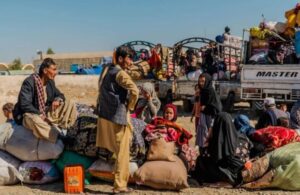Role models are individuals whose actions and methods light the way for others and through positive and inspiring traits can help individuals in achieving their goals and improving the quality of their lives.
Statement
In any society, the choice of role models by youths plays a significant role in shaping their behaviors and attitudes. People choose role models to guide them in making better life choices, selecting role models according to their views and beliefs.
Role models can be either positive or negative, which is why their selection varies depending on individuals’ perspectives. People, especially youngsters, choose role models based on the knowledge level, awareness, way of thinking, personality traits, being a distinguished figure, outlook on life, fame, and other factors.
Understanding how young people select role models and the impact of these models on their lives is an important topic. Therefore, Salam Watandar conducted a survey in 26 provinces with the participation of 647 youths to determine who the youths in Afghanistan choose as their role models, which characteristics are important in their selection, and how these role models affect their lives.
Background
Several media outlets, educational institutions, and organizations have published useful articles and studies on role models, characteristics of ideal role models, the need for role models in individuals’ lives, and the benefits of role modeling. However, no specific field research has been conducted on how role models are chosen and what type they are among the youths in Afghanistan.
To examine the role model phenomenon in the lives of young people, Salam Watandar conducted a survey among 647 youths in 26 provinces to gain insights into the role of role modeling and the type of role models in the lives of Afghan youths.
Main questions
- Do young people have role models in their lives?
- How and based on which characteristics do young people in Afghanistan choose their role models?
- What is the impact of role models on the lives and progress of young people in Afghanistan?
Objectives
- To explore the role of role models among young boys and girls as the primary objective;
- To examine the positive and negative effects of role models on the progress of youths;
- To investigate and analyze which individuals are most often chosen as role models by young people.
Survey timeline
This survey was conducted over the course of approximately one and a half months (from July 18 to August 27 of 2024).
Analysis method
Given the quantitative nature of the research, data was collected through a questionnaire distributed using Google Docs processor, and the analysis was carried out using the Statistical Package for the Social Sciences (SPSS) software and Google Docs analysis tools.
Survey challenges
Due to the lack of prior research on youth role models and the lack of trust and interest in participating in surveys, the following challenges were encountered:
- The lack of awareness about role models and their types among young people was a major challenge in this study.
- A lack of interest among young people to participate in this survey.
- Insufficient awareness and knowledge regarding the survey topic.
- Completing the sample size for the research.
Variables
The role models of Afghan youths, the types of role models among young people, and the role model selection process in their lives are the key variables in this survey.
Summary report
The Salam Watandar survey on role models and their types among youths in Afghanistan shows that many young people have chosen role models in their lives, and these role models have had a significant impact on their attitudes and behaviors. The findings of this survey indicate that 84.7% of the participants in the survey have clear role models in their lives, and 82.1% of them have experienced positive and inspiring impacts from their role models. The results suggest that role modeling can help improve the quality of life and foster personal and social growth for young people.
Youngsters participated in this survey, have said that they selected role models from various categories as 54.4% of the young respondents have chosen famous and well-known people as role models. 28.8% have chosen family members in addition to famous people, and 10.4% have chosen religious scholars.
In addition, 62.5% of respondents consider ethics, knowledge, and crisis management skills as the most important criteria for selecting a role model, while 36.4% prioritize progress and success.
Despite these findings, changes in the selected role models are also an important aspect. For instance, 42% of participants have never changed their role models, while others have changed theirs once or several times. This suggests that young people may change their perspectives and role models based on new experiences or changing circumstances.
The survey’s findings emphasize that role models play an important role in shaping the lives of young people, and whether positive or negative, the choice of role models can influence their personality development and future.
General report
Salam Watandar conducted this survey for the first time to explore the role of role models in young people’s lives and to identify the criteria on which they base their choices.
This survey was conducted across 26 provinces, with Balkh having the highest participation rate (17.5%) and Nimruz having the lowest (0.2%).
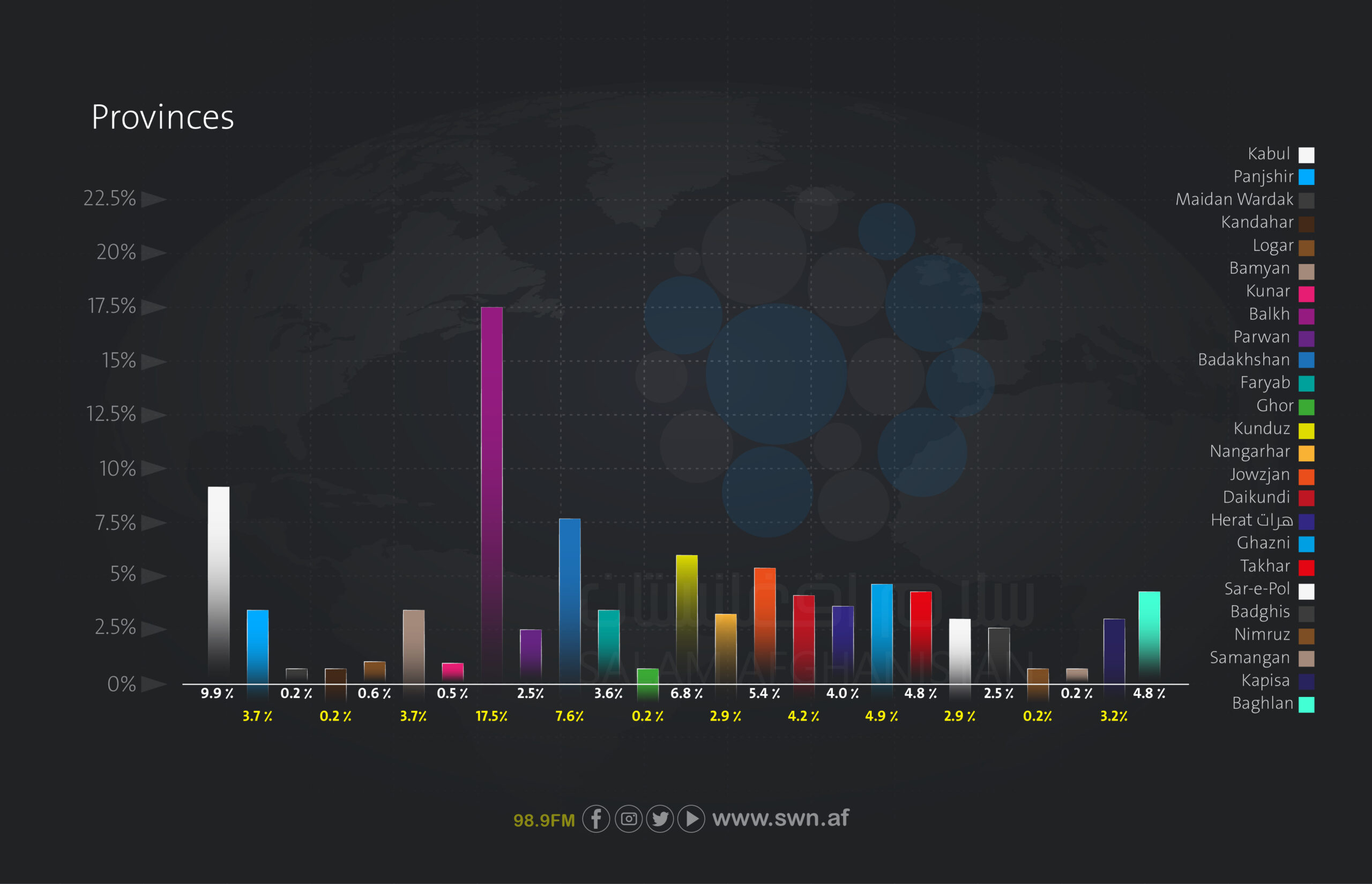
Out of the 647 respondents in this survey, 370 were male and 277 were female.
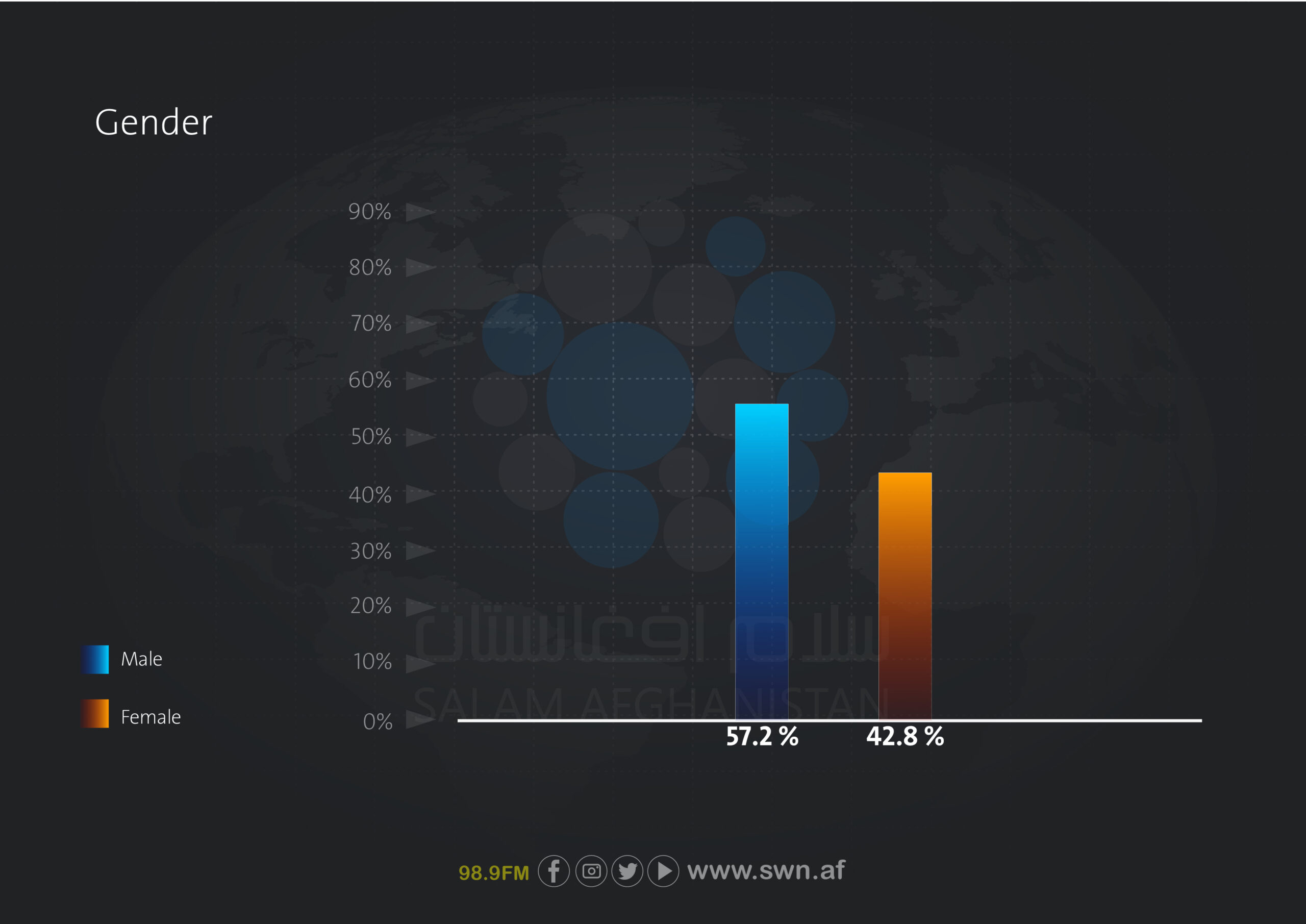
The survey participants were from various age groups: 46.5% were between the ages of 20 and 25, and 11.7% were between 33 and 35 years old.
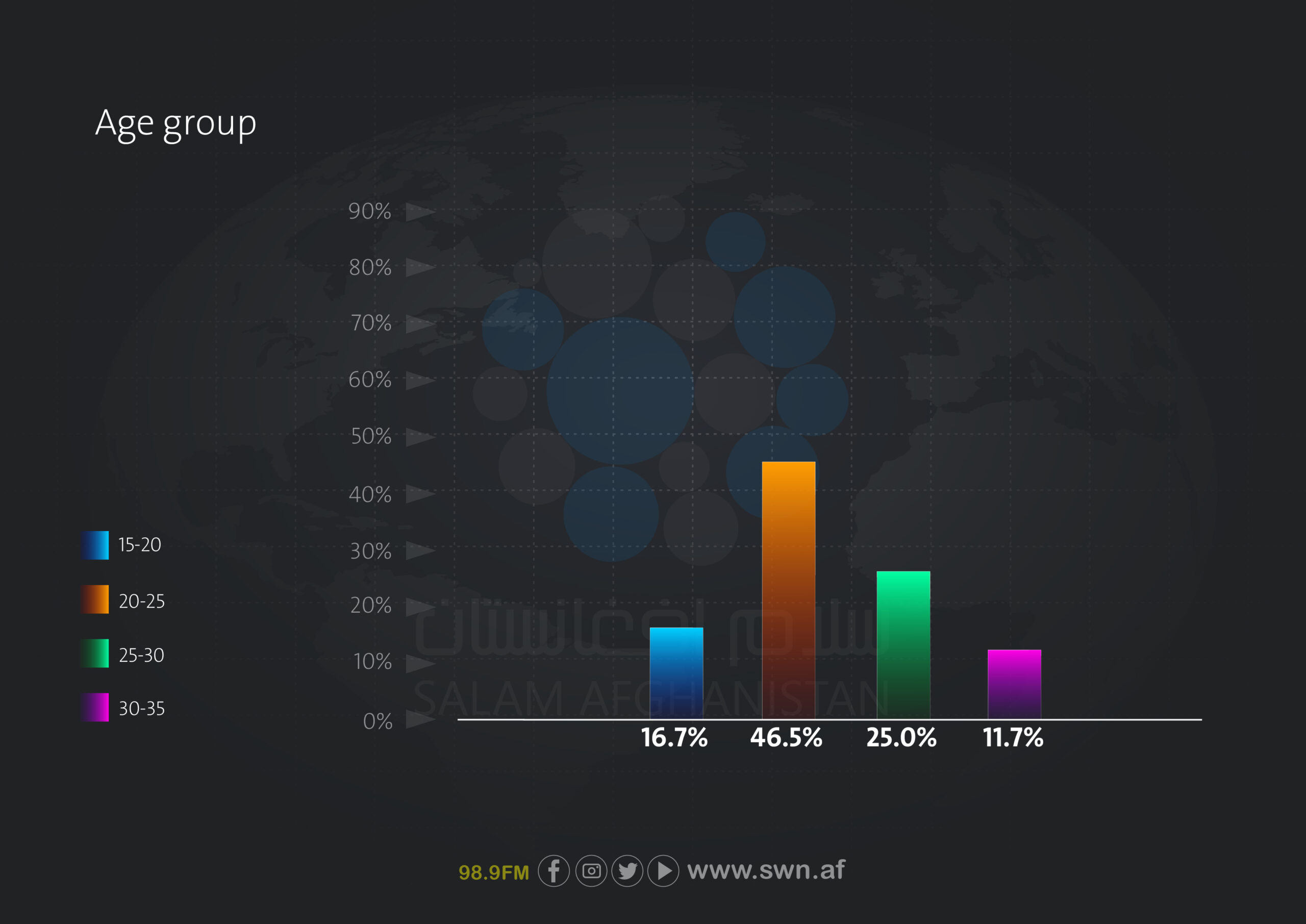
In this survey, the educational levels of the participants also varied, with 60% having a bachelor’s degree, 3.2% having a master’s degree, 27.4% being high school graduates, and 9.4% having completed primary education.

The survey results show that 84.7% of the participants have chosen role models in different areas of their lives, while 15.3% did not have any role models.

The survey also examined how young people select their role models. The findings revealed that 77.9% of participants chose their own role models, 11.7% were influenced by their families, 6.8% by their teachers, and 3.6% by their friends.
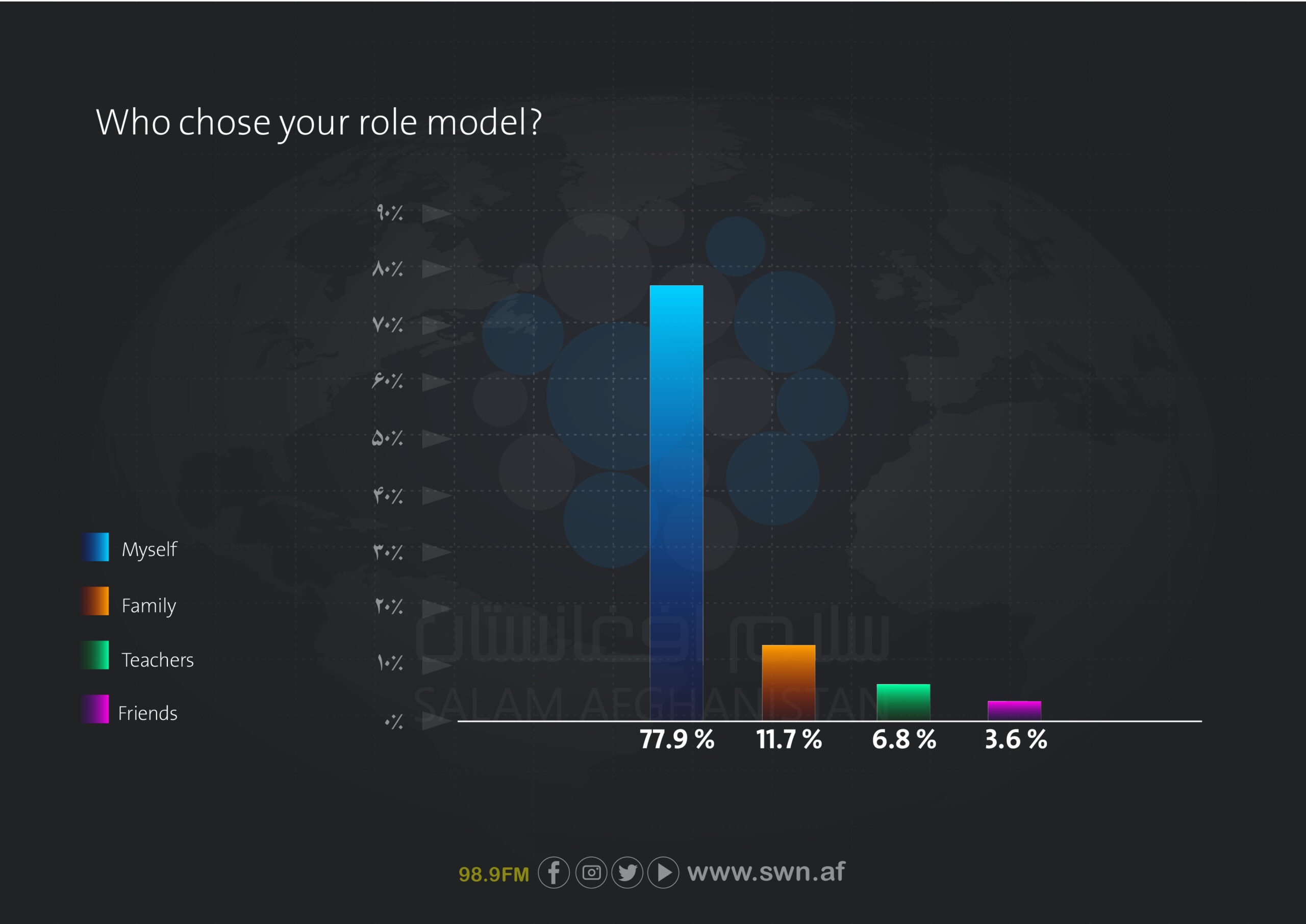
Based on the survey results, 82.1% of participants reported that the impact of role models on their lives was positive and inspiring, 13.9% said it had a normal impact, 0.7% experienced negative effects, and 3.3% felt no impact.
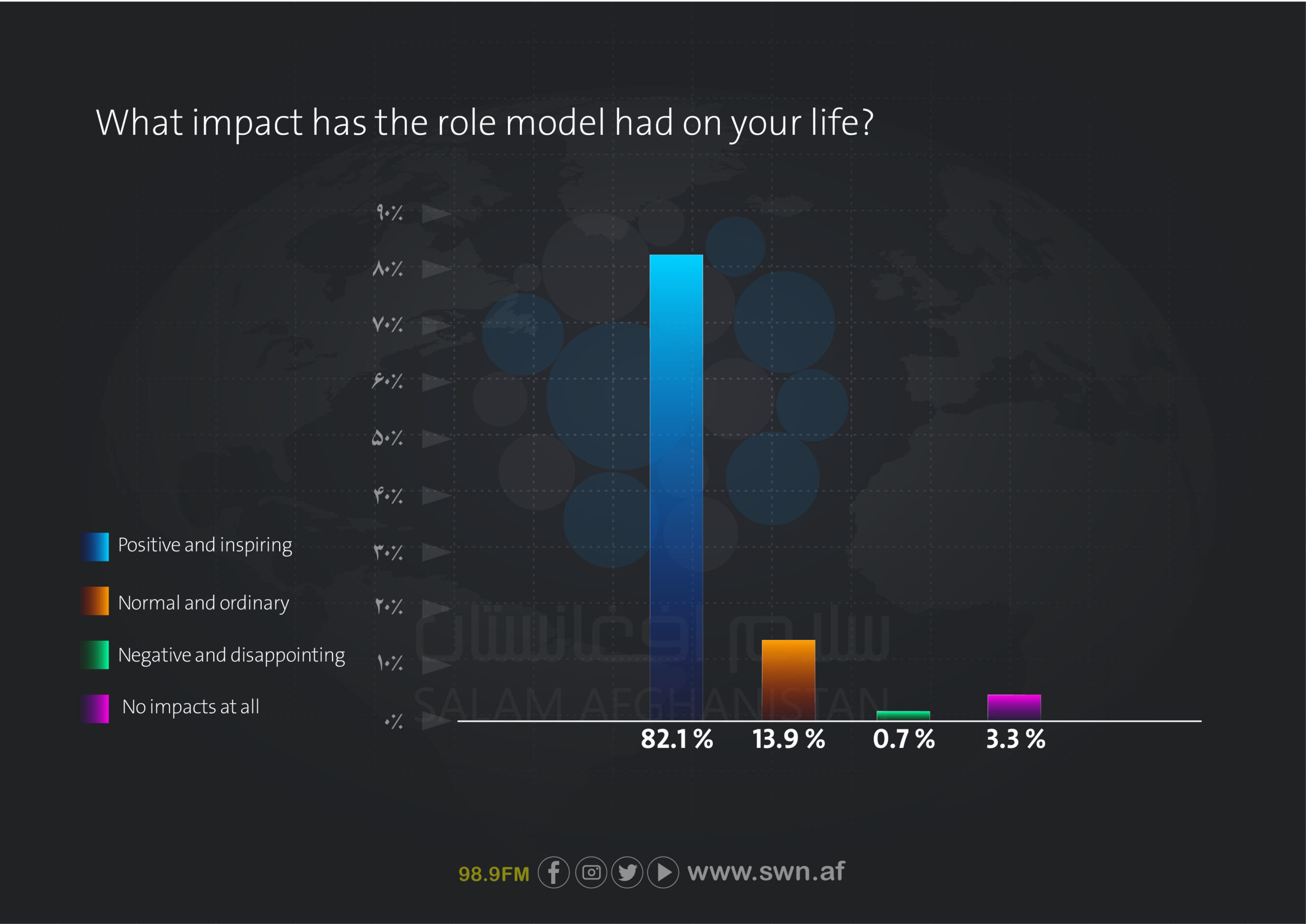
Today, young people choose their role models through various means. 32.6% of participants said they chose their role models by reading books, 26.9% from society, 25.5% from media, and 15% with the help of their families.

The respondents chose different types of individuals as role models. 54.9% selected famous and well-known people, 28.8% chose family members, 10.4% chose religious scholars, and 5.8% chose wealthy individuals.
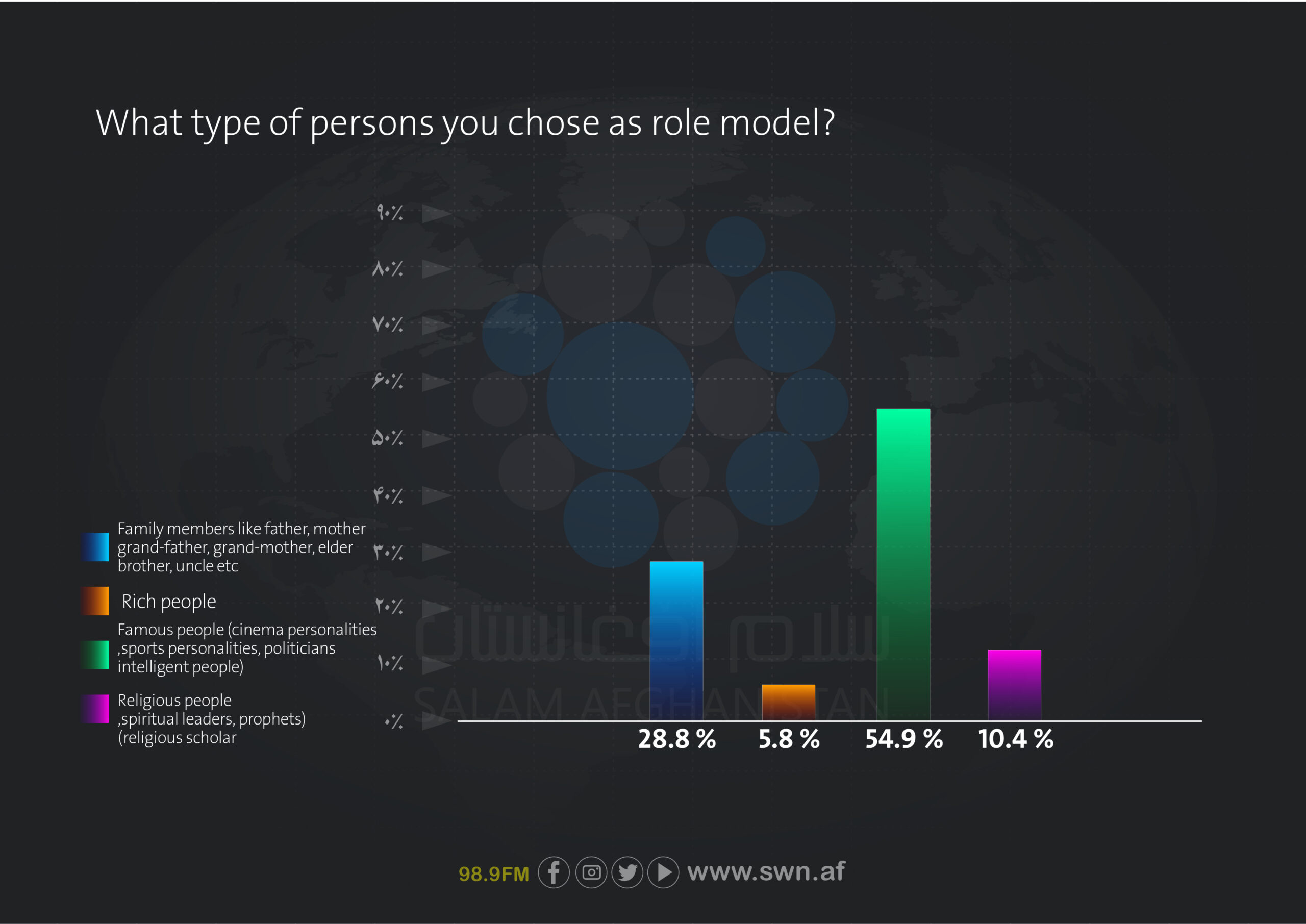
According to the survey, 75.4% of participants select their role models based on knowledge and understanding, 9.5% choose them due to shared values or traits, 7.7% are influenced by reputation, 4.6% choose their ideal based on the authority and power, and 2.9% are motivated by money and assets.

The young participants in this survey selected their role models based on different criteria. Among the 647 respondents, 50.7% chose individuals based on their progress and knowledge, 46.5% based on their personality and ethics, and 2.7% based on their appearance.
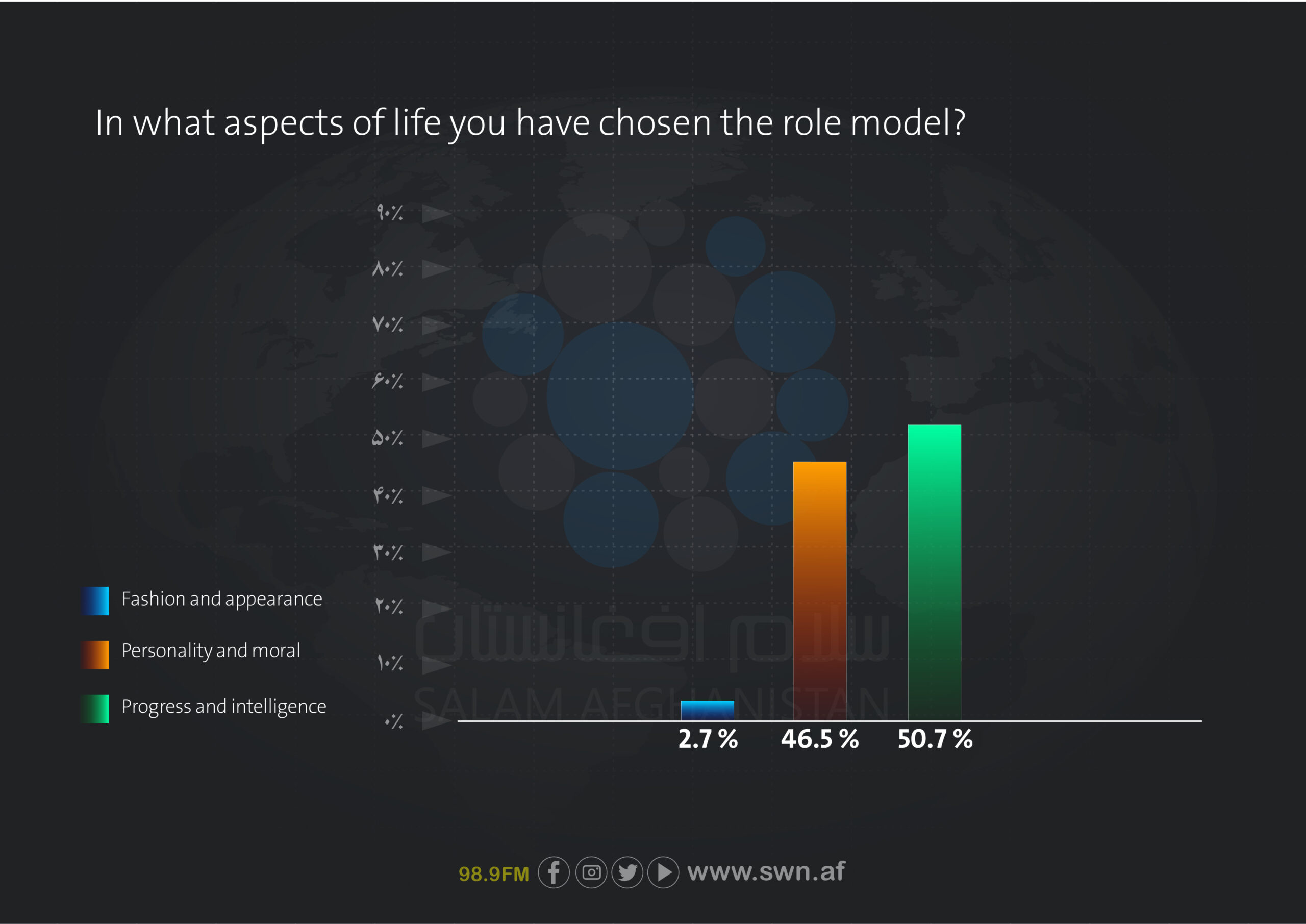
62.5% of respondents in this survey selected their role models based on ethics, knowledge, and crisis management skills, 36.4% based on progress and success, and 1.1% based on appearance.
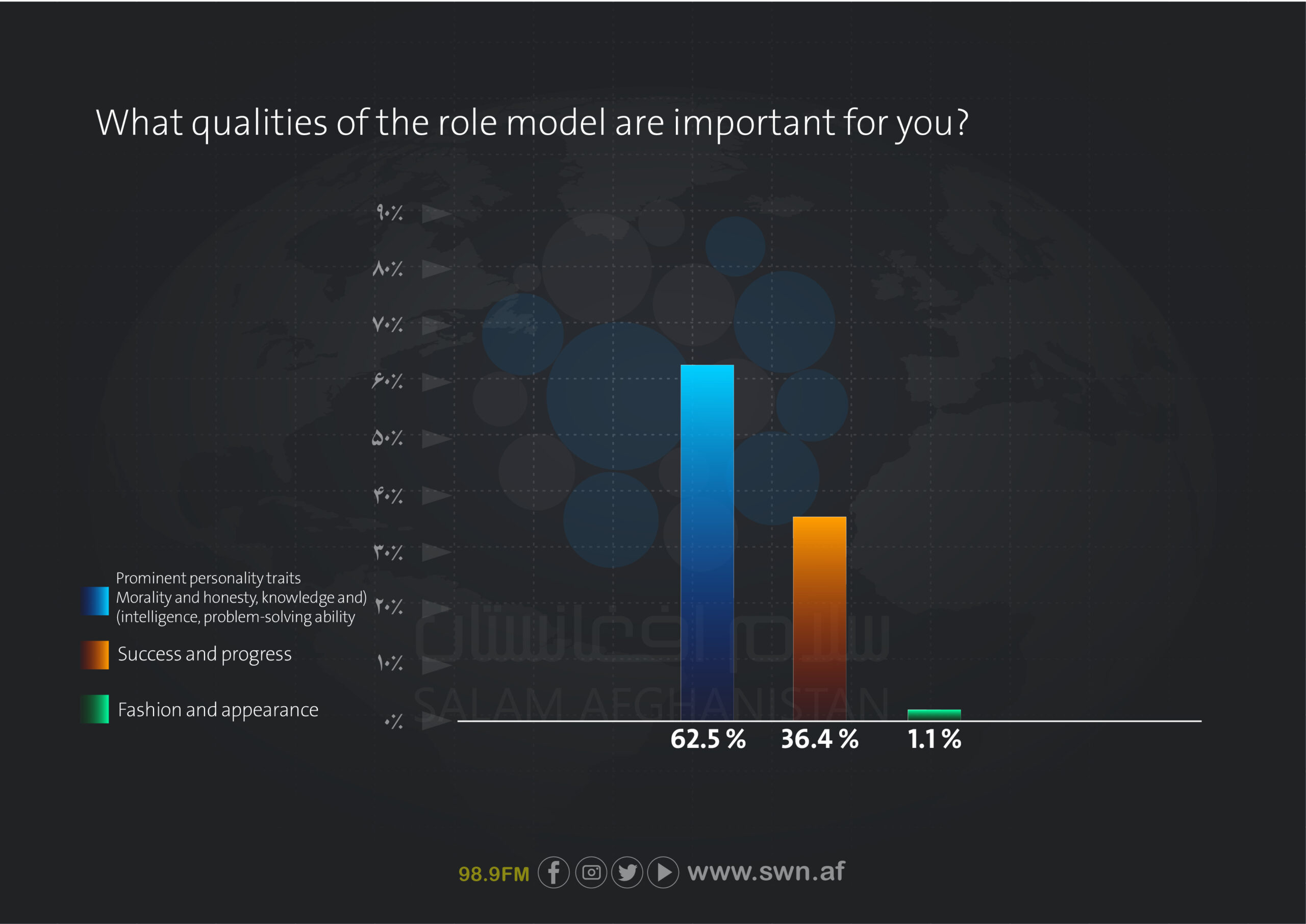
Some young people have chosen a single fixed role model, while others prefer to model different aspects of their lives or change their role models over time. The survey results show that 42% of participants have never changed their role models, 28.8% have changed once or twice, 16.4% have changed several times, and 12.8% are uncertain about changing their role models.

Recommendations
- The government must introduce positive and inspiring role models to youths through educational and cultural programs so that young people can benefit from them in their life journeys.
- The government can facilitate young people’s access to educational resources and opportunities for social participation, helping them learn from successful role models and take more active roles in society.
- Organizations supporting youths can organize special training programs to help young people distinguish between positive and negative role models and learn from successful experiences while avoiding mistakes.
- The media can play a key role by producing and broadcasting special programs about successful role models in fields like science, culture, sports, etc., motivating youths and increasing the impact of these programs through regular reports on their progress.
- Educational institutions should conduct broader research on youths’ behavior and needs, providing solutions for improving behavior and fostering positive identity.
- Educational institutions can design curricula that encourage youths to select positive role models and strengthen positive values in their lives.
- Families must play a supportive role in selecting and introducing appropriate role models for their children, as this stage of life can determine the future path of young people.





